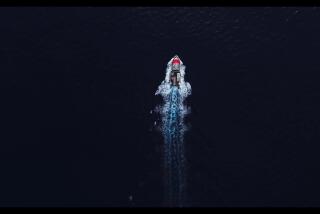Mayday, mayday
- Share via
The mockumentary “Incident at Loch Ness,” a film fest favorite that screened this month at the Egyptian Theatre in Los Angeles, swirls around the enigma of one overexposed serpent.
Tabloid hog Nessie also rates the longest entry, 9 1/2 pages, in George Eberhart’s “Mysterious Creatures: A Guide to Cryptozoology,” a 723-page rundown of scientifically undocumented species.
He began writing the book in 1960 at age 10 while under the spell of zoologist Bernard Heuvelmans’ 1958 book, “On the Track of Unknown Animals,” and Ivan Sanderson’s 1961 tome, “Abominable Snowmen: Legend Comes to Life.”
“I also became interested in forbidden topics,” says Eberhart, who is now a senior editor at American Libraries magazine in Chicago, in part because his father had banned Charles Darwin’s “Origin of Species” from the house. As a teenager, Eberhart hitchhiked to university libraries to consume dinosaur stories from 19th century scientific journals and microfilm newspaper accounts of strange animal encounters, such as 1880s descriptions of an evil livestock-eating monster with six legs, bat wings and a giant snaky body dwelling in Northern California’s Elizabeth Lake.
Eberhart’s 157-page high school science project, “The History of Sea-Serpentry,” laid the groundwork for his 1983 book, “Monsters: A Guide to Information on Unaccounted for Creatures.”
After a detour into extraterrestrial research, he returned to cryptids, cataloging — with photos and interpretive illustrations — 1,085 “animals” in 40 major categories, from odd amphibians to wild men.
The California constituency from “Mysterious Creatures,” which was published in 2002, includes 1930s sightings of the Old Man of Monterey Bay, a sea monster with a fish tail and an “old man’s huge eyes” in a giraffe-like head atop a 12-foot neck, and Hamlet, a 12-foot serpent first spotted in 1884 in Lake Elsinore.
Eberhart says he has yet to see any cryptids with his own eyes, but like the mockumentarians, he went looking for the elusive Nessie.
— Joel Grossman
More to Read
Sign up for The Wild
We’ll help you find the best places to hike, bike and run, as well as the perfect silent spots for meditation and yoga.
You may occasionally receive promotional content from the Los Angeles Times.








